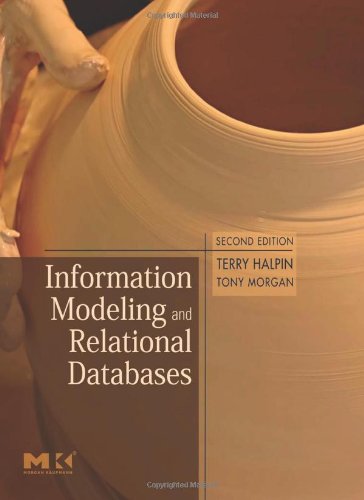Information Modeling and Relational Databases, Second Edition book
Par dillingham julia le lundi, mars 6 2017, 08:16 - Lien permanent
Information Modeling and Relational Databases, Second Edition by Terry Halpin, Tony Morgan


Information Modeling and Relational Databases, Second Edition Terry Halpin, Tony Morgan ebook
ISBN: 0123735688, 9780123735683
Format: pdf
Publisher: Morgan Kaufmann
Page: 976
Information Modeling and Relational Databases:. Terry Halpin, “Information Modeling and Relational Databases”, Second Edition, Morgan Kaufmann. Beginning Relational Data Modeling - Sharon Allen, Evan Terry. This second edition includes new material on recursive queries, “missing information” without nulls, new update operators, and topics such as aggregate operators, grouping and ungrouping, and view updating. The Value of Value Engineering. Industry The second reason was to provide a cogent and compelling argument for using geographic 4 Pacific Northwest National Laboratory, Buildings Energy Data Book, tables 1.3.1, “Estimated Value of All U.S. If you have a modest-to-advanced background in SQL, you'll learn how to and Relational Theory: How to Write Accurate SQL Code, 2nd Edition. You'll learn about relational database components, database queries, SQL, the database life cycle, logical database design using normalization, and physical database design. Sustainability Solutions: Enabling Technologies. Information Modeling and Relational Databases provides an introduction to ORM (Object Role Modeling)-and much more. This book sheds light on the principles behind the relational model, which is fundamental to all database-backed applications–and, consequently, most of the work that goes on in the computing world today. Beginning Relational Data Modeling, Second Edition will lead you. It is a database of ingredient information that should assist the home or craft brewer in creating their own recipes in order to attempt the replication of commercial beers. Info Modeling and Relational Databases supplies an introduction to ORM (Object Part Modeling)-and significantly much more. Robert Hilliard presents an excellent technique for doing this in his book (Information-Driven Business). Database theory and practice have evolved since the relational model was developed more than 40 years ago.